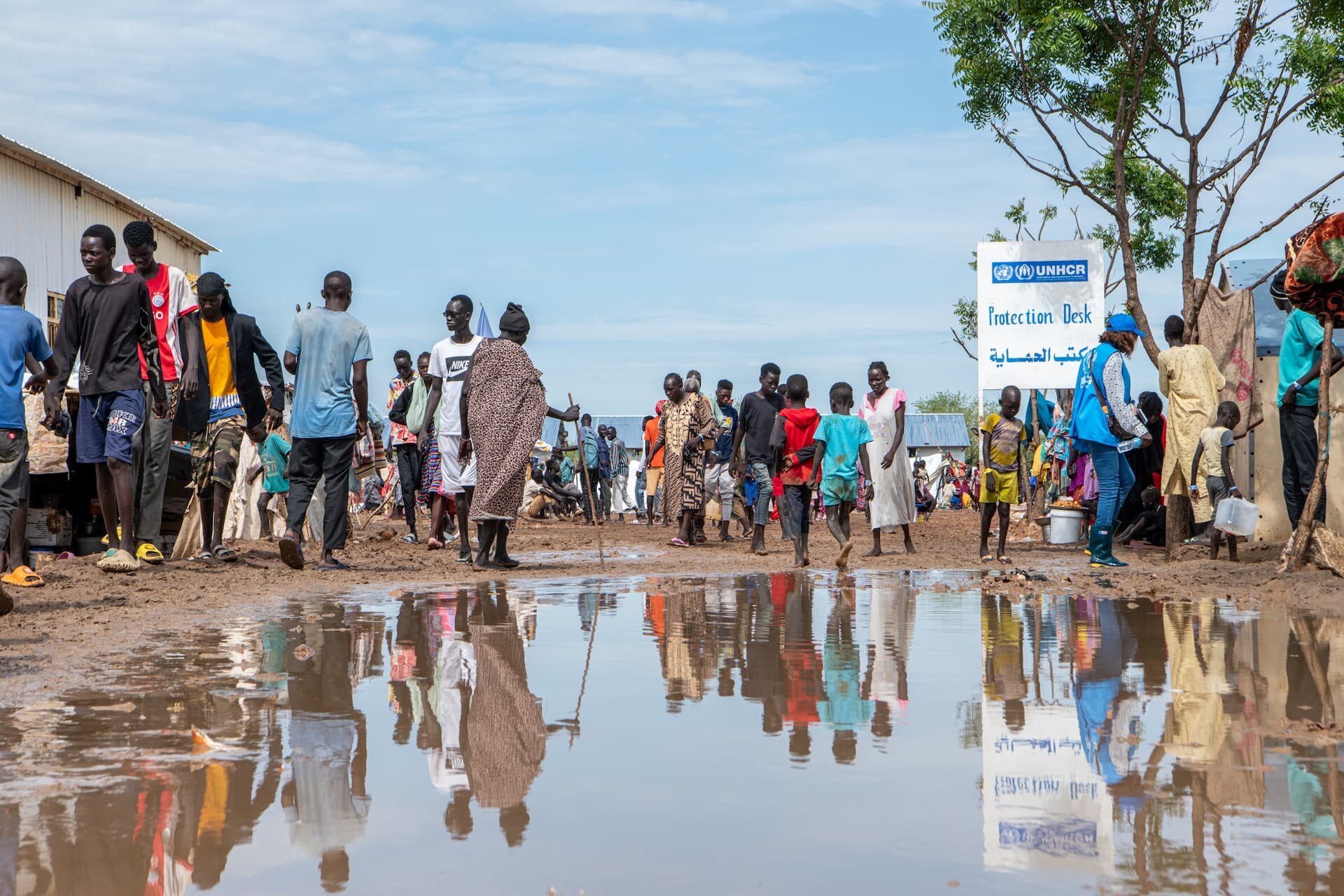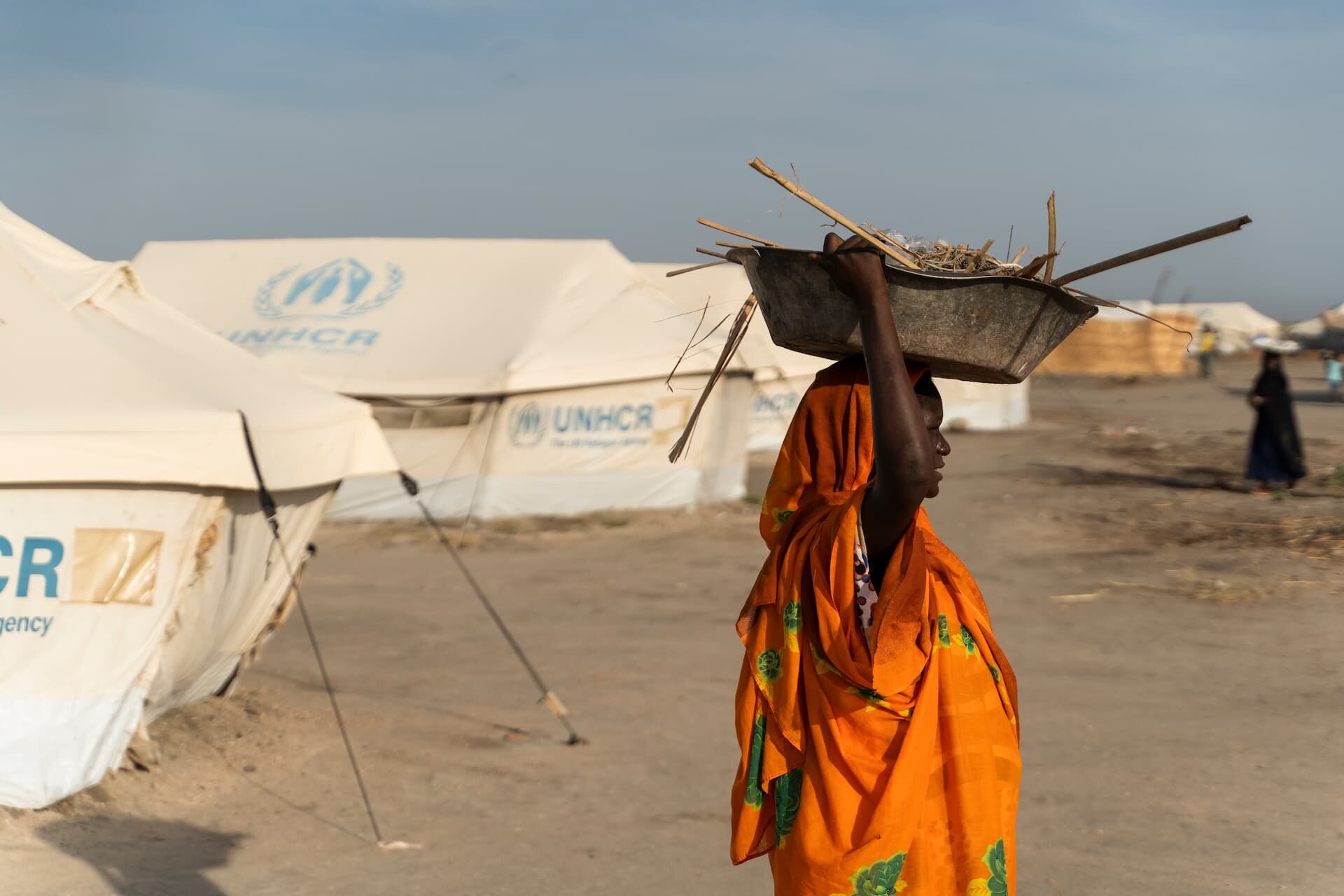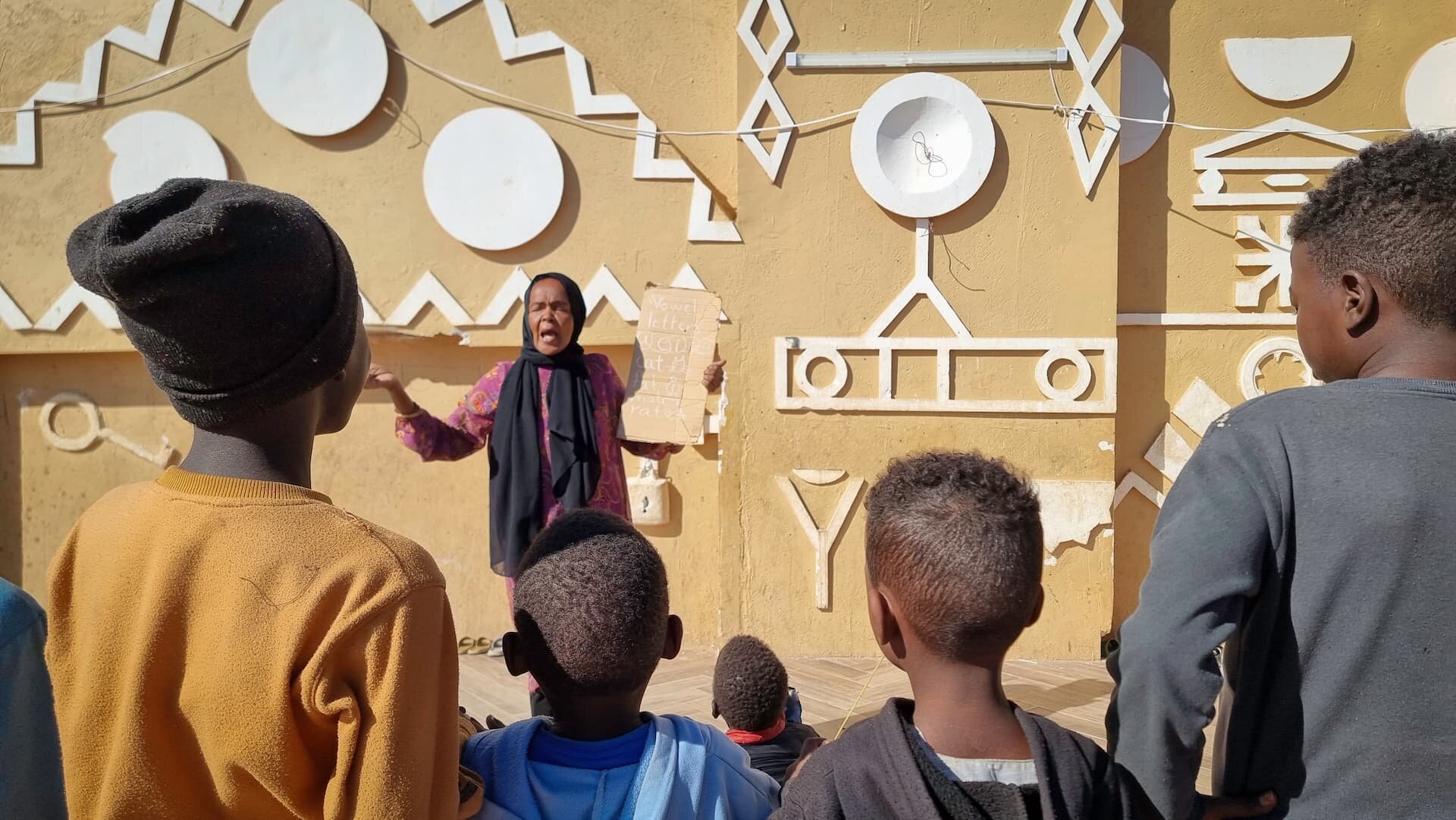Sudan: One year of spiralling conflict and displacement
Apr 11, 2024

Heavy rains flood UNHCR's transit centre in Renk in South Sudan's Upper Nile State. The centre is hosting thousands of people who have fled the conflict in Sudan, the majority of them returning South Sudanese. ©UNHCR/Samuel Otieno
Since deadly conflict and violence broke out in Sudan last April, millions of people have been forced to flee in search of safety and humanitarian assistance.
More than 8.6 million people forcibly displaced
People on the move are at higher risk to their physical safety. UNHCR and partners work to understand their reasons for fleeing and to ensure appropriate support. In Chad, people fleeing the conflict in Sudan were asked to which dangers they felt most exposed.
In addition to those displaced inside the country, nearly 1.8 million people have fled to the Central African Republic, Chad, Egypt, Ethiopia, and South Sudan. Thousands continue to arrive daily to remote and insecure border areas, where the logistical challenges and costs of operating are enormous. Chad has received the most refugees since the conflict erupted.
Almost three quarters of all those who have fled across borders are Sudanese refugees and asylum-seekers while the remainder are refugees who had been living in Sudan before being forced to return to their home countries prematurely.
Refugee population - by origin and destination

Without an end to the conflict and more resources and access for aid agencies to continue to respond to the crisis, more people will be forced to flee to neighbouring countries, and beyond.
The crisis is continuing to grow
Over 50 per cent of displaced people fled Sudan in the first four months of the crisis. By mid-September 2023, it was up to 1 million people and by the end of January 2024, this number had climbed to approximately 1.5 million. A year on from the start of the war, thousands are still crossing borders every day, with South Sudan receiving the most people, including refugees and South Sudanese returnees, and Chad and Egypt receiving the most refugees.
The crisis is spreading
Smuggling and trafficking networks are taking advantage of the chaos and many people are experiencing exploitation, extortion, and abuse as they attempt to reach safety and assistance.
Since the onset of the conflict on 15 April 2023, there has been significant onward movement of around 15,000 registered asylum-seekers and refugees within the East and Horn of Africa and Great Lakes region, and to North Africa and Europe via the Central and Western Mediterranean Sea. Others have moved through Ethiopia, Somalia and Djibouti via Yemen towards the Arabian Peninsula.
Uganda – which already has over 1 million refugees – has welcomed 30,000 Sudanese refugees, including over 14,000 since the start of the year. Most Sudanese who arrive are from Khartoum and have a university-level education.
In the past year, close to 16,000 Sudanese refugees have registered with UNHCR in Libya after travelling either directly from Sudan or through Chad and Egypt while another 2,700 Sudanese are awaiting registration. According to the latest UNHCR registration figures, the number of refugees and asylum-seekers registered with UNHCR in Tunisia has reached around 6,500.
Both Libya and Tunisia are departure points for people attempting to move onwards to Europe. Nearly 6,000 Sudanese arrivals were recorded in Italy last year compared to 1,000 in 2022. Sudanese refugees in Europe are relatively new and their journeys differ from those of more established refugee populations from the Horn of Africa who often have family and kinship ties in Europe. This makes them more susceptible to exploitation and abuse.
Movements from Sudan
- Air movement
- Sea movement
- Land movement
Lines shown on map illustrate the onward movement of Sudanese to different countries. They do not depict the actual roads/routes taken.
Alarming levels of gender-based violence
On top of the inherent dangers posed by conflict and displacement, women and girls have been exposed to shocking levels of sexual violence, whether in conflict-affected areas inside Sudan, on the move, or in countries of asylum.
In a report at the end of 2023, UNHCR said women and girls inside Sudan were bearing the brunt of consequences from the conflict, including “alarming” levels of sexual violence. Women and girls trapped in the Darfur and Kordofan regions are at particularly high risk.
Many of those seeking asylum have also experienced or witnessed harassment, abduction, rape, sexual assault, and other forms of violence during their journeys. Conflict-related sexual violence, as well as intimate partner violence, child marriage and sexual exploitation are particularly prevalent, but such incidents are severely under-reported as survivors struggle to reach services or due to fear of stigma and retaliation.
Dire conditions in neighbouring countries, including the scarcity of natural resources, limited infrastructure and essential services, and a lack of livelihood activities, have increased the vulnerability of women and girls. Meanwhile, severe underfunding has created gaps in assistance and service delivery, further heightening the risks of sexual exploitation and women resorting to harmful coping mechanisms to survive.

A woman carries firewood in Khor Ajwal camp for internally displaced people in Sudan’s White Nile State. ©UNHCR/Ala Kheir
UNHCR is coordinating the response to gender-based violence in areas hosting refugees with its partners. This includes medical services, psychosocial support, material assistance, and referral to appropriate services.
Education disrupted
In Sudan, the education system is facing a crisis. The government can no longer ensure the regular and timely payment of teacher salaries, even in states unaffected by the conflict. Many teachers have also been displaced. In addition, schools have been destroyed or are being used to shelter internally displaced people. Over 19 million children are currently out of school with many children having missed one full academic year.
Host countries were already facing challenges with providing education to national students even before the crisis and have little space or capacity to enroll Sudanese refugee children who have already lost months of school. So far, the education response in host countries has been limited in scope and hampered by a lack of funding. To add to the challenges, refugee students often need extra help with language and transitioning to a different curriculum and school system. They may also need psychosocial support to resume learning. In 2024, over 1 million Sudanese refugee children will need education. If funding levels do not improve, 80 per cent of these children risk remaining out of school.

A displaced teacher gives an English class to children in a shelter for displaced families in Wadi Halfa, near Sudan’s border with Egypt. ©UNHCR/Mohamed Rached Cherif
Hunger is worsening
People in Sudan have lost their jobs due to the war, they cannot open their businesses and they cannot safely farm their land. Without an income or a harvest and with aid delivery disrupted, food security has deteriorated significantly, prompting warnings of worsening hunger in some areas. For refugees living in Sudan, the situation has been made worse by the introduction of a 50 per cent food ration cut since January 2024 due to funding shortfalls.
With alarming levels of acute malnutrition inside Sudan, both refugees and returnees are increasingly likely to arrive to host countries in a poor nutritional state. Nearly 50,000 malnourished children have been identified in Chad. Without a dramatically scaled-up response to the food security crisis inside Sudan, we will see many more.
What are UNHCR and humanitarian partners doing?
Inside Sudan, the ongoing clashes in Khartoum, Kordofan, and Darfur regions have hindered the ability of UNHCR and other agencies to deliver much-needed assistance, although some distribution of relief items has been possible with the presence of local staff and partners. In areas where the security situation permits, such as Gedaref, Kassala, White Nile, and Blue Nile states, UNHCR has strengthened its operations to continue providing protection and assistance to refugees, and to respond to new displacement patterns. Additionally, UNHCR has established new offices in Port Sudan, Wad Madani, and Wadi Halfa, where our teams and partners are assisting refugees, internally displaced and other affected Sudanese people. We provide relief items, emergency shelters, cash assistance, and critical services, including education programmes, legal aid for individuals lacking civil documentation, and psychosocial support.
Highlights and achievements in refugee-hosting countries
Data as of 29 February 2024.
individuals received protection services
individuals provided with food assistance
individuals supported with shelter or housing assistance
individuals relocated or supported with transportation cash allowance
as of end December 2023
individuals provided with non-food items
individuals provided with primary healthcare consultations
In neighbouring countries, UNHCR is coordinating the response to the influx of refugees and returnees together with governments, other UN agencies and partners. Our teams have been working around the clock to support new arrivals, set up transit centres where people can rest and receive essential protection services and emergency aid, establish and expand camps and settlements where they can access longer-term support, and facilitate onward transfers away from overcrowded border areas. We have set up a total of 10 new refugee settlements in Chad, the Central African Republic, Ethiopia and South Sudan.
What can you do to help?
Millions are in urgent need of help, but waning international attention and a chronic lack of funding are hampering the capacity of UNHCR and other organizations to save lives.
The Regional Refugee Response Plan, which calls for $1.4 billion for 82 partners to assist 2.7 million people in five neighbouring countries, is only 7 per cent funded.
Within Sudan, the 2024 Humanitarian Response Plan requires US$2.7 billion to accelerate the scale up of lifesaving and protection assistance and avert a further deterioration of the humanitarian situation for 14.7 million people – it is currently just 6 per cent funded.support.
We cannot let this become another forgotten emergency. To support people forced to flee Sudan click below.